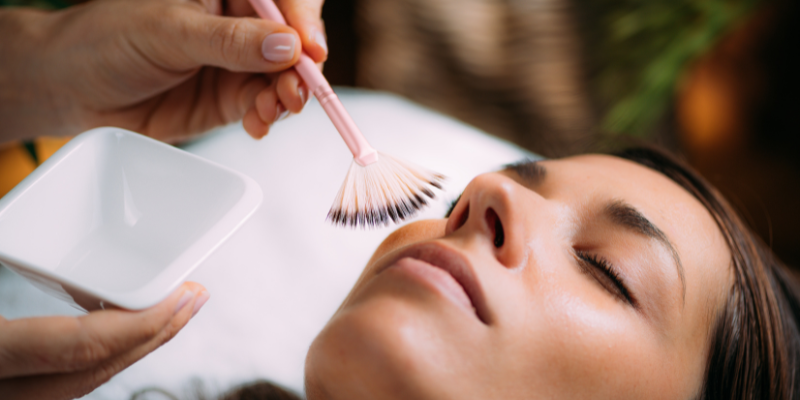Using Glycolic Acid for Skin Care
By Alexandra Nelson
What is Glycolic Acid?

Benefits of Glycolic Acid for the Skin
For skin treatment and beauty routines, cosmetic and pharmaceutical companies utilize Glycolic Acid in topical products to treat skin conditions and improve skin texture and appearance. Glycolic Acid is a superior anti-aging product that dramatically plumps the skin, making lines and wrinkles less visible, vanishing hyperpigmentation over time, tightening and clearing pores, and enhancing collagen production for firmer, healthier skin. At the same time, it speeds up cell turnover, as well as hydrates the skin for a youthful look. Older researchers from 1999 suggest that including Glycolic Acid products in our skincare routine can be highly beneficial. As a result, it may cause an improvement of the following skin conditions:
Acne
It rapidly improves all types of acne, particularly comedonal acne, which occurs when pores become clogged with impurities. Since Glycolic Acid is a chemical exfoliator, one of its main characteristics is that it cleans dead skin cells remaining in the pores accumulated by dirt particles and unnecessary oils. As a result, clogging the tiny orifices in the first layer of the skin to later produce the pimple commonly known as acne.
UV damage
Glycolic Acid is an effective treatment for sun damage to the skin. Daily and unprotected exposure to UV light can cause several skin issues. The visible signs of this fact can include but are not limited to hyperpigmentation and wrinkles. Subsequently, Glycolic Acid can fade dark patches over time and also has a protective effect against UVB rays. Furthermore, it may help prevent photoaging.
Lines and wrinkles
Slowly but surely, the skin loses its plumpness, elasticity, and collagen production slows down over time. As a result, fine lines and wrinkles can form. Glycolic Acid can decelerate this normal process of aging since it:- Increases hyaluronic acid levels in the skin, a substance that keeps the skin naturally moisturized.
- Rapidly stimulates the production of collagen, the principal and necessary protein in the skin, which causes a plump and radiant appearance, promoting, at the same time, elasticity.
- Also, it expands fibroblast and keratinocyte proliferation rates, which help to repair and regenerate skin cells.

This diagram helps us to observe how the use of antiaging treatments, in this case, exfoliants or moisturizer that contains Glycolic Acid, can dramatically help to enhance the appearance of a younger look. The images on the left show different skin conditions that can develop over time, like acne, hyperpigmentation, and the most common and unavoidable, aging. On the other hand, the images on the right reveal the result of including Glycolic Acid in our skincare routine. How Can We Use 70% Glycolic Acid? For all skin types, any product with a concentration of Glycolic Acid from 20%–70% should be used in lower concentrations initially, then gradually increase in subsequent sessions with an interval of 2 weeks between two treatment sessions. It is essential to follow the steps listed below for the safe use of this product.
- Cleanse the skin with a gentle cleanser and abundant warm water.
- Apply one pump of the product across the skin, avoiding the eyes and lips in case of exfoliants.
- Wait 2-3 minutes. Next, rinse off with warm water.
- Following the application of Glycolic Acid, it is relevant to apply a moisturizer to hydrate the newly exfoliated skin. It is important to remember that it is convenient to use Glycolic Acid as a nighttime routine and apply sunscreen the following morning after the night treatment.
< Back

